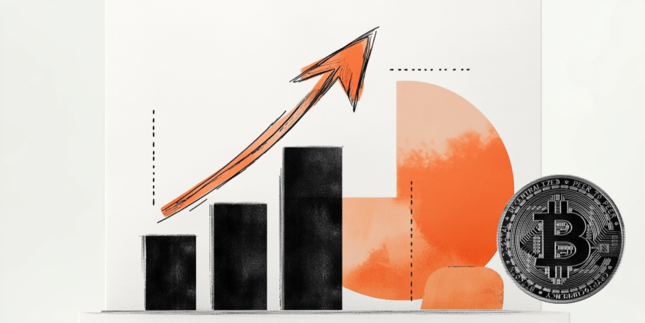- WTI price edges lower to around $71.00 in Thursday’s early Asian session.
- US crude oil stockpiles rose by 8.664 million barrels last week, according to the EIA.
- Oil traders worry about China-US trade.
West Texas Intermediate (WTI), the US crude oil benchmark, is trading around $71.00 during the early Asian session on Thursday. The WTI price edges lower amid a large build in US crude stockpiles and worries about renewed US-China trade tensions.
US crude inventories rose sharply last week, signaling weaker demand. The US Energy Information Administration (EIA) weekly report showed crude oil stockpiles in the United States for the week ending January 31 climbed by 8.664 million barrels, compared to a rise of 3.463 million barrels in the previous week. The market consensus estimated that stocks would increase by 3.2 million barrels.
Concerns of a potential trade war between the United States and China, the world's top energy importer, could exert some selling pressure on the WTI price. On Tuesday, China's finance ministry announced a package of tariffs on a range of US products, including crude oil, farm equipment, and some autos in an immediate response to a 10% tariff on Chinese imports announced by US President Donald Trump. Additionally, China put several companies, including Google, on notice for possible sanctions in a measured response to Trump's tariffs.
On Wednesday, Iran's President Masoud Pezeshkian called OPEC members to unite against potential US sanctions after Trump's announcement of resuming the "maximum pressure" campaign against Iran during his first term. Meanwhile, Russia's Deputy Prime Minister Alexander Novak said that the group of ministers from OPEC and allies headed by Russia (OPEC+) reviewed Trump's proposal to increase production and decided that OPEC+ would begin increasing output on April 1 in accordance with previous plans.
WTI Oil FAQs
WTI Oil is a type of Crude Oil sold on international markets. The WTI stands for West Texas Intermediate, one of three major types including Brent and Dubai Crude. WTI is also referred to as “light” and “sweet” because of its relatively low gravity and sulfur content respectively. It is considered a high quality Oil that is easily refined. It is sourced in the United States and distributed via the Cushing hub, which is considered “The Pipeline Crossroads of the World”. It is a benchmark for the Oil market and WTI price is frequently quoted in the media.
Like all assets, supply and demand are the key drivers of WTI Oil price. As such, global growth can be a driver of increased demand and vice versa for weak global growth. Political instability, wars, and sanctions can disrupt supply and impact prices. The decisions of OPEC, a group of major Oil-producing countries, is another key driver of price. The value of the US Dollar influences the price of WTI Crude Oil, since Oil is predominantly traded in US Dollars, thus a weaker US Dollar can make Oil more affordable and vice versa.
The weekly Oil inventory reports published by the American Petroleum Institute (API) and the Energy Information Agency (EIA) impact the price of WTI Oil. Changes in inventories reflect fluctuating supply and demand. If the data shows a drop in inventories it can indicate increased demand, pushing up Oil price. Higher inventories can reflect increased supply, pushing down prices. API’s report is published every Tuesday and EIA’s the day after. Their results are usually similar, falling within 1% of each other 75% of the time. The EIA data is considered more reliable, since it is a government agency.
OPEC (Organization of the Petroleum Exporting Countries) is a group of 12 Oil-producing nations who collectively decide production quotas for member countries at twice-yearly meetings. Their decisions often impact WTI Oil prices. When OPEC decides to lower quotas, it can tighten supply, pushing up Oil prices. When OPEC increases production, it has the opposite effect. OPEC+ refers to an expanded group that includes ten extra non-OPEC members, the most notable of which is Russia.
Information on these pages contains forward-looking statements that involve risks and uncertainties. Markets and instruments profiled on this page are for informational purposes only and should not in any way come across as a recommendation to buy or sell in these assets. You should do your own thorough research before making any investment decisions. FXStreet does not in any way guarantee that this information is free from mistakes, errors, or material misstatements. It also does not guarantee that this information is of a timely nature. Investing in Open Markets involves a great deal of risk, including the loss of all or a portion of your investment, as well as emotional distress. All risks, losses and costs associated with investing, including total loss of principal, are your responsibility. The views and opinions expressed in this article are those of the authors and do not necessarily reflect the official policy or position of FXStreet nor its advertisers. The author will not be held responsible for information that is found at the end of links posted on this page.
If not otherwise explicitly mentioned in the body of the article, at the time of writing, the author has no position in any stock mentioned in this article and no business relationship with any company mentioned. The author has not received compensation for writing this article, other than from FXStreet.
FXStreet and the author do not provide personalized recommendations. The author makes no representations as to the accuracy, completeness, or suitability of this information. FXStreet and the author will not be liable for any errors, omissions or any losses, injuries or damages arising from this information and its display or use. Errors and omissions excepted.
The author and FXStreet are not registered investment advisors and nothing in this article is intended to be investment advice.
Recommended content
Editors’ Picks

EUR/USD trims losses, flirts with 1.1400
EUR/USD gives away some of its earlier losses and reclaims the area beyond 1.1400 the figure on turnaround Tuesday. The better sentiment around the pair follows some loss of momentum in the US Dollar, which recedes from earlier tops.

GBP/USD picks up pace and surpasses 1.3400
GBP/USD now manages to regain balance and advances past the key 1.3400 barrier following the resurgence of some selling bias around the Greenback and a widespread recovery in the risk-associated universe.

Gold bounces off lows near $3,300
After bottoming out near the $3,300 region per troy ounce, Gold prices approach the $3,330 zone as the US Dollar gives away part of its daily advance and the risk-on mood gathers extra pace.

Bitcoin eyes $100,000 amid Arizona Reserve plans, corporate demand, ETF inflows
Bitcoin price is stabilizing around $95,000 at the time of writing on Tuesday, and a breakout suggests a rally toward $100,000. The institutional and corporate demand supports a bullish thesis, as US spot ETFs recorded an inflow of $591.29 million on Monday, continuing the trend since April 17.

May flashlight for the FOMC blackout period – Waiting for the fog to lift
We expect the FOMC will leave its target range for the federal funds rate unchanged at 4.25-4.50% at its upcoming meeting on May 6-7, a view widely shared by financial markets and economists. Market pricing currently implies only a 9% probability of the FOMC cutting the fed funds rate by 25 bps.

The Best brokers to trade EUR/USD
SPONSORED Discover the top brokers for trading EUR/USD in 2025. Our list features brokers with competitive spreads, fast execution, and powerful platforms. Whether you're a beginner or an expert, find the right partner to navigate the dynamic Forex market.



